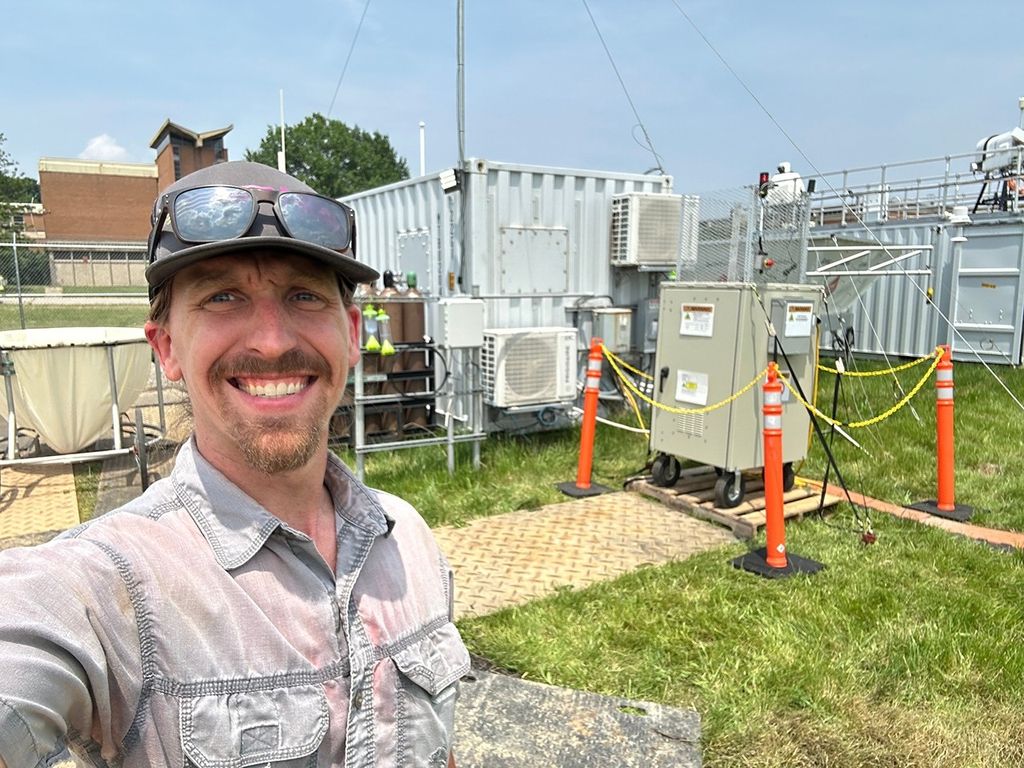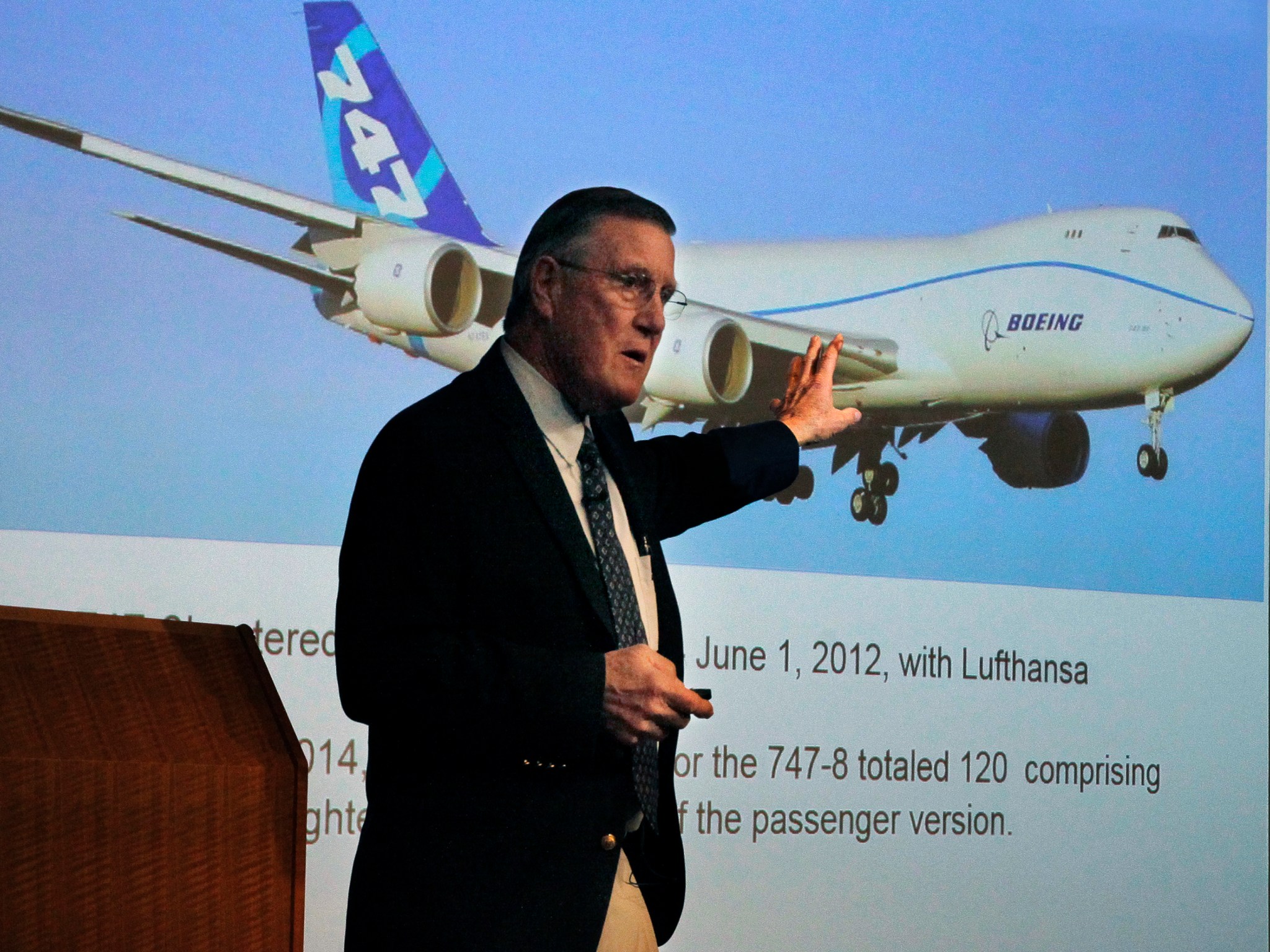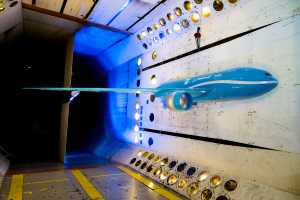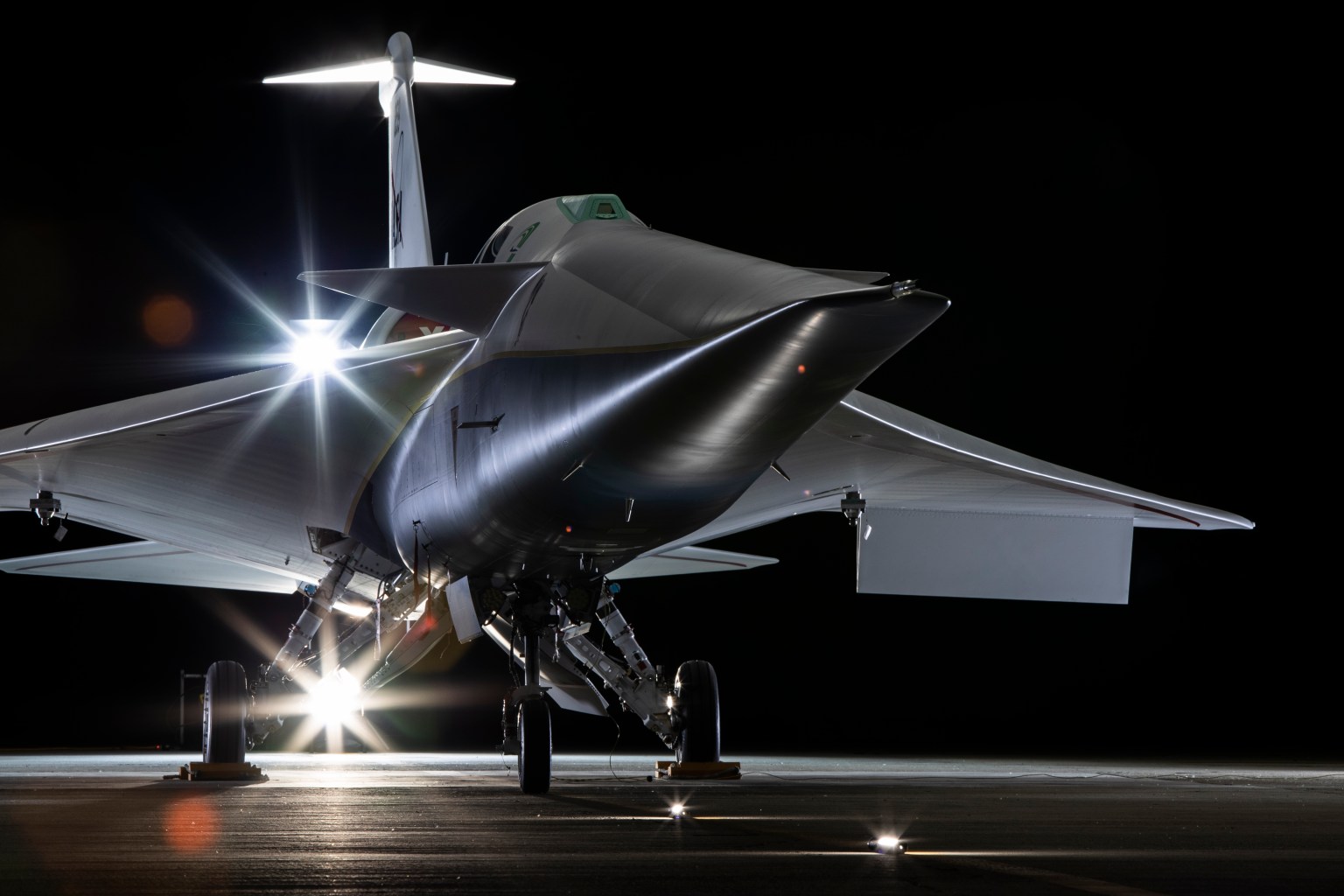It’s been more than a century since Orville Wright completed the first powered flight on a cold, windy December day in Kill Devil Hills, North Carolina.
Aviation has, of course, evolved by leaps and bounds since then. And NASA has been right there in the thick of that evolution — in fact, they’ve helped spearhead it.
Just ask Darrel Tenney, former chief of the Materials Division and director of the Vehicle Systems Program at NASA’s Langley Research Center in Hampton, Virginia.
“In 1903, the Wright brothers — that was wood and cloth,” said Tenney. “By 2011 we had Boeing introduce the 787, which is more than 50 percent composites. It’s primarily graphite reinforced epoxy materials. During that 100 plus years, NASA played a really critical role in helping to mature the technologies.”
Tenney discussed NASA’s role in the development of advanced composite technologies during a recent talk titled, “Coming of Age: NASA’s Role in Lightweight Composite Structures.” The talk was part of NASA Langley’s Colloquium series.
The road to advanced composites was a long one. Though the days of wood-and-cloth aircraft were short lived, it was metal that carried the aviation industry for several decades. Aluminum became the standard material manufactures used to construct their aircraft. It wasn’t until the 1970s that the industry began a gradual transition toward composites.
NASA’s role in that transition can’t be understated. The agency helped educate and develop a new workforce around advanced composites. It also developed test standards and did “the basic research to understand how these new materials behaved in a service environment, how they failed and what the environmental effects were on them,” said Tenney.
That research was essential in getting industry and the Federal Aviation Administration to accept composites.
“One of the key things we learned was that you can actually hit a composite structure at a low velocity where you don’t see any visible damage … but you may have created non-visible damage inside the structure,” said Tenney.
This was totally unlike metal, which visibly dents or cracks when damaged. So researchers at NASA had to conduct tests that helped them understand the conditions that could cause damage to composites and also how to inspect for it.
They also had to develop complex modeling to help predict how any damage would propagate over time.
As aeronautic and space programs that incorporated advanced composites came and went, NASA continued researching composites, developing better, tougher materials and gaining a clearer understanding of how they behaved under stress.
The demand for composites was growing, too. Because composites are lighter than metal, they reduce fuel burn. They also increase range and payload, and reduce manufacturing costs and maintenance.
By the 1990s, Boeing had incorporated significant composite elements in its 777 and McDonnell Douglas had done the same with its C-17. The 777 featured composites in its cabin floor and vertical and horizontal tails. The C-17 had composites in several of its major control surfaces and secondary structural components.
Boeing and McDonnell Douglas both showed their appreciation for NASA Langley’s contributions to their respective aircraft by landing them at the center and opening them for employees to tour in 1996.
Today, composites are commonplace in aircraft manufacturing. Boeing’s 787, which went into service in 2011, is perhaps the most visible example of that.
“I think you can say when you have the 787 that’s at least 50 percent composites, which has a composite wing and a composite fuselage, it has come of age,” said Tenney.
The 787’s composite structure makes it about 40,000 pounds lighter than it would be otherwise. And that reduction in weight helps improve both the fuel efficiency and emissions by about 20 percent.
NASA’s work in composite materials continues. Just a few days ago, researchers at NASA Langley received a 30-foot-wide, 10,000-pound test article called the Pultruded Rod Stitched Efficient Unitized Structure, or PRSEUS.
Built for NASA’s Environmentally Responsible Aviation project by Boeing Research & Technology, PRSEUS is a cross-section of a futuristic aircraft design called a hybrid wing body. It’s primarily made up of a low-weight, damage-tolerant, stitched composite material. Researchers will put PRSEUS through the paces by bending, pressurizing and eventually breaking it in their Combined Loads Test System facility.
“I’m 10 years out of here,” said the retired Tenney, “but I’m still excited about that one.”
Tenney expressed pride, too, in NASA Langley’s ongoing, persistent efforts to make advanced composites as integral to aviation as aluminum once was.
“During the late ’70s, the ’80s, the ’90s, all the way up to today,” said Tenney, “Langley can be very proud of the fact that we were a major player on the national scene on helping to maturate that technology.”
Joe Atkinson
NASA Langley Research Center

































